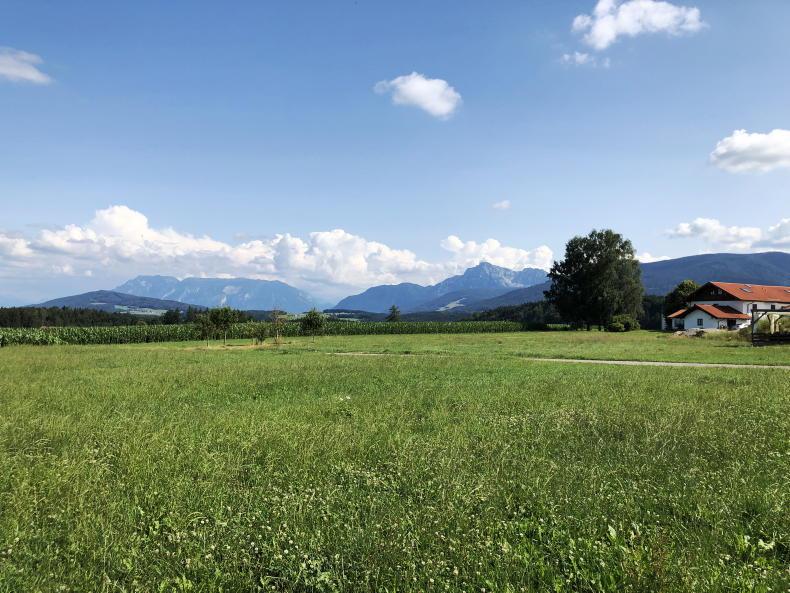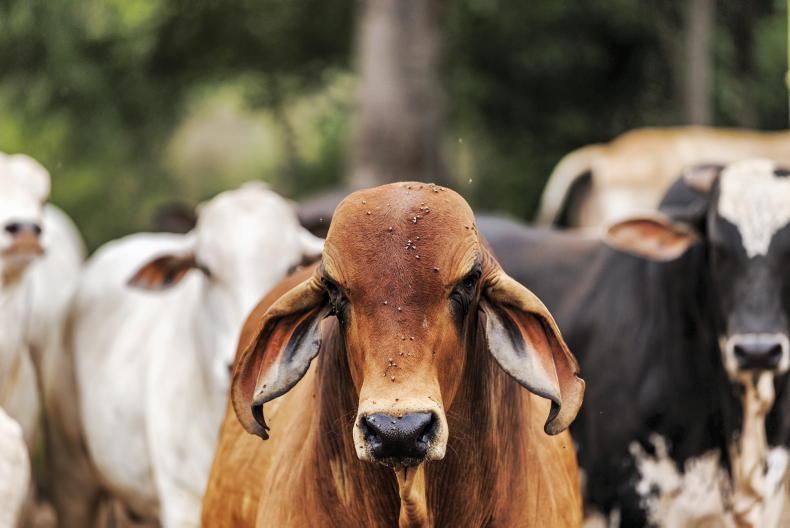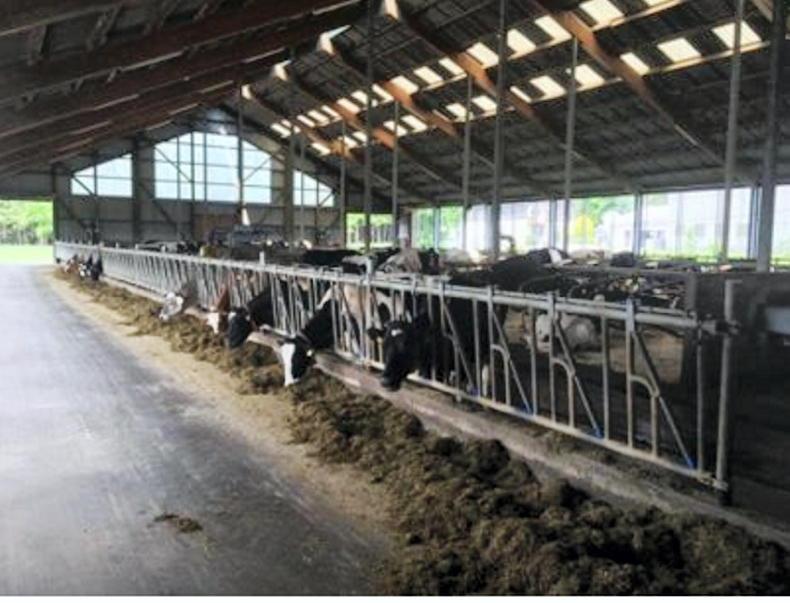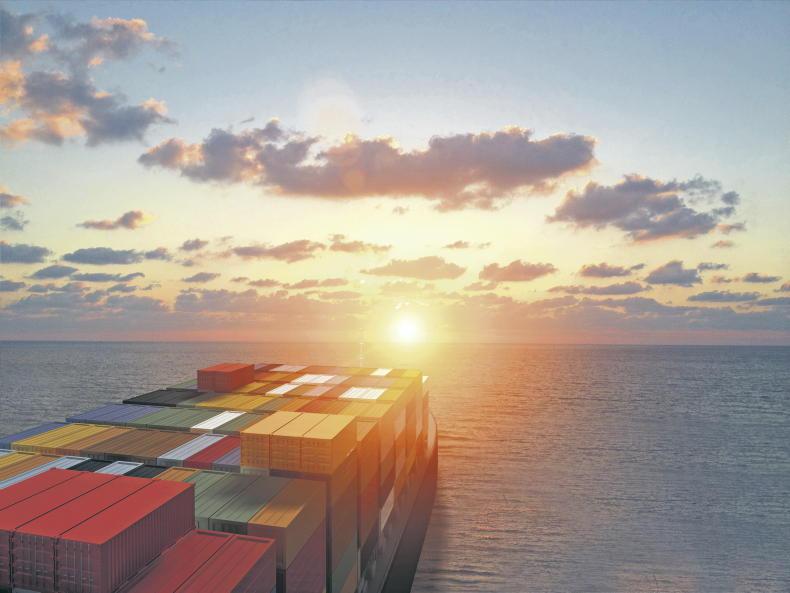Germany is the third-largest recipient of CAP funds after France and Spain, receiving almost €4.9bn annually in Pillar I funding.
Back in March, before the CAP was finally agreed in Brussels, Germany agreed the key pillars of its CAP strategic plan.
In Germany, agricultural policy is agreed by the federal ministry of food and agriculture and 16 federal states, while Pillar II programmes are designed and implemented at state level.
Pillar I (direct payment) decisions that apply to the whole country are led by the federal agriculture ministry in Berlin.
While some of the detail is not yet fixed, farmers have had a good sense of direction of travel since spring.
Income redistribution
In relation to redistribution, Germany will not apply capping or degressivity (gradual reductions for those with payments over a certain amount) but instead, front-loading will continue to apply.
Payment levels are expected as follows: first 40ha, €69/ha; 41-60ha, €41/ha
Farmers will receive increased payments for a number of hectares, with 12% of the direct payment ceiling being used.
Payment levels are expected as follows: first 40ha, €69/ha; 41-60ha, €41/ha.
This is a significant increase on the last CAP where 6.9% of payments were paid on first hectares, with €50/ha for the first 30ha and an additional €30/ha for an additional 16ha.
Eco schemes
Germany agreed to ring-fence 25% of the direct payments ceiling for eco schemes prior to the final CAP agreement.
The Irish Farmers Journal understands a two-year transition period has been agreed in Germany, which may mean less will be spent on eco schemes in 2023 and 2024. This will allow an adjustment period for farmers.
It has also been agreed that in certain circumstances spending for the Agri Environmental and Climate Measures (AECM) in Pillar II will be offset against the spending obligations for eco schemes. It is likely that this will kick in where Germany has overspent in Pillar II.
Transfers to Pillar II
German agriculture ministers appear to have agreed on significantly higher transfers from Pillar I to Pillar II than is called for. Reallocation of funds begins in 2023, at 10% and increases incrementally to 15% in 2026. Between 2023 and 2027, an average of 12.7% of direct payments is allocated to the second pillar.
These funds do not attract co-financing and will be available for a range of measures.
Coupled payments
It is understood that Germany proposes to introduce coupled payments (2% of Pillar II) for suckler cows (€60/ha) and sheep (€30 /ha) in ecologically valuable areas as a means to stimulate biodiversity. Germany did not avail of coupled support in the last funding period. Interestingly, there has been some criticism from environmental lobbyists that dairy cows are not in scope for coupled payments which was seen by some as an incentive to allow dairy cows graze.
In addition, 3% of the direct payments ceiling will be ring-fenced for young farmers. Based on the proposal, estimates put the average base premium at €152/ha for the years 2023-2027, with a first hectare payment applied on top of that.
It said Germany should reduce livestock, cut meat consumption and look to better harness the potential for greenhouse gas sequestration
Separately, the German Commission on the Future of Agriculture reported in July and called for the complete phasing out of CAP direct payments within the next two funding rounds.
It said Germany should reduce livestock, cut meat consumption and look to better harness the potential for greenhouse gas sequestration. It estimates that this transformation would require €5-8bn per year investment, with low-income households needing to be compensated for higher food prices.
The report highlights that care must be taken to avoid relocating production abroad and, as such, an EU-wide approach is needed. It remains to be seen if this report is seen in the programme for government following Germany’s elections.
While the scale of the green ambition in German agriculture is significant, a substantial transformation budget is proposed which recognises that farms must remain economically viable in the face of such significant change.
Agreed eco-scheme measures
Voluntary increase in the non-productive area.Planting of flowering strips on arable and permanent cultivated areas.Diverse cultures in arable farming, including minimum 10% of legumes and at least five main crops.Support for agroforestry measure on arable land.Permanent grassland extensification for entire farm.Permanent grassland managed for results.Arable and permanent crops without chemical-synthetic plant protection.
Germany is the third-largest recipient of CAP funds after France and Spain, receiving almost €4.9bn annually in Pillar I funding.
Back in March, before the CAP was finally agreed in Brussels, Germany agreed the key pillars of its CAP strategic plan.
In Germany, agricultural policy is agreed by the federal ministry of food and agriculture and 16 federal states, while Pillar II programmes are designed and implemented at state level.
Pillar I (direct payment) decisions that apply to the whole country are led by the federal agriculture ministry in Berlin.
While some of the detail is not yet fixed, farmers have had a good sense of direction of travel since spring.
Income redistribution
In relation to redistribution, Germany will not apply capping or degressivity (gradual reductions for those with payments over a certain amount) but instead, front-loading will continue to apply.
Payment levels are expected as follows: first 40ha, €69/ha; 41-60ha, €41/ha
Farmers will receive increased payments for a number of hectares, with 12% of the direct payment ceiling being used.
Payment levels are expected as follows: first 40ha, €69/ha; 41-60ha, €41/ha.
This is a significant increase on the last CAP where 6.9% of payments were paid on first hectares, with €50/ha for the first 30ha and an additional €30/ha for an additional 16ha.
Eco schemes
Germany agreed to ring-fence 25% of the direct payments ceiling for eco schemes prior to the final CAP agreement.
The Irish Farmers Journal understands a two-year transition period has been agreed in Germany, which may mean less will be spent on eco schemes in 2023 and 2024. This will allow an adjustment period for farmers.
It has also been agreed that in certain circumstances spending for the Agri Environmental and Climate Measures (AECM) in Pillar II will be offset against the spending obligations for eco schemes. It is likely that this will kick in where Germany has overspent in Pillar II.
Transfers to Pillar II
German agriculture ministers appear to have agreed on significantly higher transfers from Pillar I to Pillar II than is called for. Reallocation of funds begins in 2023, at 10% and increases incrementally to 15% in 2026. Between 2023 and 2027, an average of 12.7% of direct payments is allocated to the second pillar.
These funds do not attract co-financing and will be available for a range of measures.
Coupled payments
It is understood that Germany proposes to introduce coupled payments (2% of Pillar II) for suckler cows (€60/ha) and sheep (€30 /ha) in ecologically valuable areas as a means to stimulate biodiversity. Germany did not avail of coupled support in the last funding period. Interestingly, there has been some criticism from environmental lobbyists that dairy cows are not in scope for coupled payments which was seen by some as an incentive to allow dairy cows graze.
In addition, 3% of the direct payments ceiling will be ring-fenced for young farmers. Based on the proposal, estimates put the average base premium at €152/ha for the years 2023-2027, with a first hectare payment applied on top of that.
It said Germany should reduce livestock, cut meat consumption and look to better harness the potential for greenhouse gas sequestration
Separately, the German Commission on the Future of Agriculture reported in July and called for the complete phasing out of CAP direct payments within the next two funding rounds.
It said Germany should reduce livestock, cut meat consumption and look to better harness the potential for greenhouse gas sequestration. It estimates that this transformation would require €5-8bn per year investment, with low-income households needing to be compensated for higher food prices.
The report highlights that care must be taken to avoid relocating production abroad and, as such, an EU-wide approach is needed. It remains to be seen if this report is seen in the programme for government following Germany’s elections.
While the scale of the green ambition in German agriculture is significant, a substantial transformation budget is proposed which recognises that farms must remain economically viable in the face of such significant change.
Agreed eco-scheme measures
Voluntary increase in the non-productive area.Planting of flowering strips on arable and permanent cultivated areas.Diverse cultures in arable farming, including minimum 10% of legumes and at least five main crops.Support for agroforestry measure on arable land.Permanent grassland extensification for entire farm.Permanent grassland managed for results.Arable and permanent crops without chemical-synthetic plant protection. 









SHARING OPTIONS